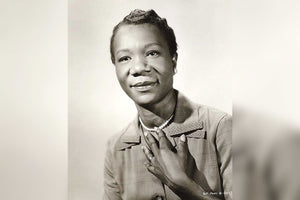Date: 23 April 1933 – 25 June 2011
Who is Annie Easley?
Annie Easley was a computer scientist, rocket scientist, and mathematician based in America. She worked for the Lewis Research Center, which is now Glenn Research Center of the National Aeronautics and Space Administration. She also worked for NASA’s predecessor-the National Advisory Committee for Aeronautics as a leading member. During her leadership at NACA, the Centaur rocket stage-the first Africans-Americans software to work at NASA was developed.
Top Five Facts about Annie Easley
- Easley started working at NASA in 1955 when it was initially called National Advisory Committee for Aeronautics.
- She started her pharmacy studies at Xavier University based in New Orleans. She however dropped her studies and moved to Cleveland after she got married to a US military. She was forced to look for another career since the university in Cleveland had stopped offering a pharmacy program. She was interested in NACA after reading an article regarding twin sisters who worked as human computers in the Cleveland newspaper. She applied for a mathematician post at NASA and was hired after two weeks.
- Easley was brought up by a single mum who encouraged her by telling her as far as she worked for anything, she could do it. She had a 6 years older brother.
- Annie was a founding member and the NASA Lewis Ski Club’s president where she served for one term. She started skiing when she was 46 where she skied in Europe, Colorado, and Canada.
- Before the 1960’s civil right laws, she helped in training African Americans in taking the voting test in Alabama State which was her home.
Inspirational Quotes from Annie Easley
“Don’t give up on it. Just stick with it. Don’t listen to people who always tell you it is hard, and walk away from it.”
“If I can’t work with you I will work around you.”
“You can do anything you want to but you have to work at it.”
Annie Easley Biography
Annie’s Childhood and Education
Annie Easley was born on April 23, 1933, in Birmingham, Alabama. Her parents were Samuel and Mary Easley. She grew up in Birmingham and pursued nursing until she was in high school where she switched to a pharmacy. Easley joined Xavier University in New Orleans, Louisiana in 1995 where she studied for two years before moving to Birmingham and later marrying a U.S military.
She started working in Jefferson County in Alabama as a substitute teacher. Besides teaching, she also helped people in her community in preparing literacy tests for use in voter registration. She helped most Africans-Americans to register and vote despite the literacy tests aiming to exclude them from voting.
Easley relocated to Cleveland where she applied for a mathematician post at NASA and got the job two weeks later. She worked at NASA for 34 years as a mathematician and computer scientist. Despite not having a college degree, she had graduated from high school and had a compelling work ethic that helped her in mastering complex equations as her position required.
She started working on a nuclear-powered rocket system in the early 1960s. She later learned computer skills after NASA advanced to machine computers. In 1970, she went back to Cleveland State University where she completed a mathematics degree while still working.
She encouraged young students to explore their interests in the STEM field. Easley also worked as a counselor in Equal Employment Opportunity where she addressed gender, race, and age discrimination complaints presented by NASA employees.
Marriage Life
Easley married a man from the US military in 1954 after which they moved to Cleveland, Ohio where his family lived. Easley later divorced and continued schooling and tutoring when she was free.
Achievements
When Easley registered as a first-time voter, some restrictions did not allow Africans-Americans to register and vote. As one of them, Easley helped African-Americans to register and vote.
She studied battery-powered vehicles that work similarly to modern hybrid cars. When she worked with NASA, she worked on the launching of the shuttle that was used to measure ozone destruction. The software helped in testing and designing the NASA nuclear reactor.
In 1960-1970, Easley worked on the Centaur rocket that used a unique fuel system and whose legacy lives to date. Centaur was successfully launched in 1963 and went through some developments for the next 30 years. Centaur was considered a great achievement to the Lewis Research Center. While at NASA, she was addressing discrimination based on race, gender, and age of the employees out of the experiences she went through.
Legacy and Death
Annie Easley was 78 years when she passed away. She died on June 25, 2011. Her legacy endures to date and her great works continue to be embraced by scientists. She inspired many by encouraging them to go for whatever they wanted.
![]() Fast Shipping
Fast Shipping![]() Subscribe to our Newsletter
Subscribe to our Newsletter![]() 🌟 New Global Competition 🌟
🌟 New Global Competition 🌟















